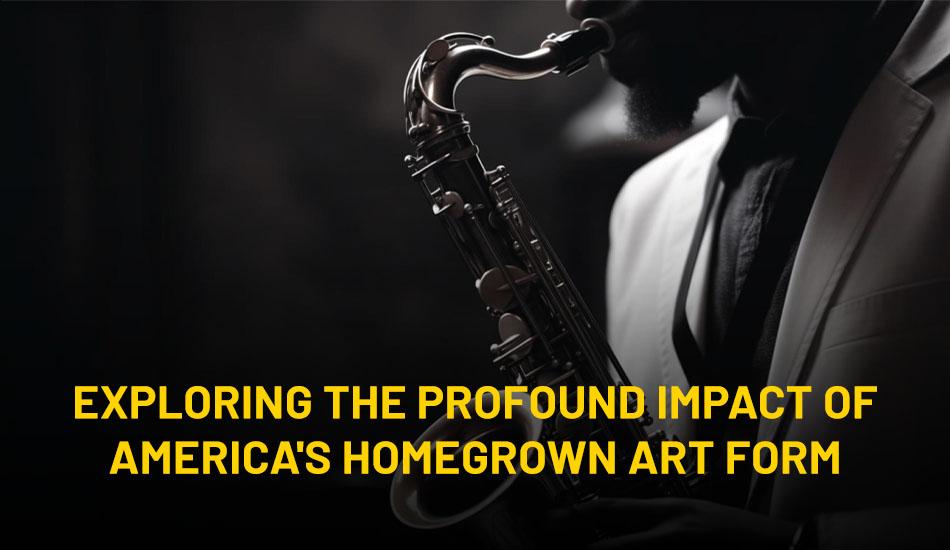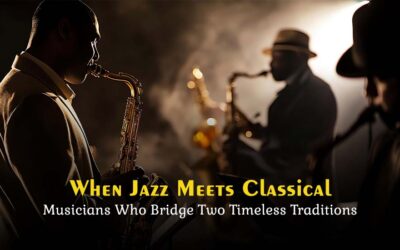Jazz music is more than just a genre; it is the American culture personified and is artistically represented through the compositional era. Creating a marvellous fusion of musical styles from Africa, Europe and the Americas, jazz art became a unique symbol for the nation’s indestructible racial mixture and endless capacity for innovation and creativity.
Uniquely American art form has brought a lasting impact on almost every sphere of culture, from fashion, literature, social movements, and individual expression. Therefore, no one can deny the fact that art not only expresses various perspectives but also makes a statement about people. Ranging from the subtle melodies of The American Jazz Singer from LA – Billie Holiday – to the experimental creations of John Coltrane, jazz has, over many decades, encompassed the very pulse of American life.
Historical Context
The history of jazz can be traced back to the late 19th century when in New Orleans, African Americans masterfully merged their musical styles with those of European music cultures. This blending of swinging rhythms, beautiful, poignant melodies, and improvising led to the birth of a most enthralling creation that many loved to have because they were magnetic. African American experience, the roots of jazz show a Connection with the art, which may be interpreted as the resistance, the creativity and the cultural richness of a community that has been involved in really harsh struggle and oppression.
The early jazz legends, namely Buddy Bolden, Jelly Roll Morton, and King Oliver, established by their remarkable musical innovation the groundwork for a new genre. As the music took shape, and its carriers left behind their countryside homes to migrate to cities like Chicago, Kansas City, and New York, it developed more sub-genres, each with its particular characteristic. Swing was the pop music of the early 1940s. The bandleaders – Coleman Hawkins, Lester Young, Art Tatum or Ben Webster – led the way, creating big-band numbers, swinging rhythms, and introspective cool jazz tunes of the West Coast.
Cultural Impact
Jazz’s influence on American culture is profound and far-reaching. It has served as the foundation for countless musical genres that have emerged over the decades, leaving an indelible mark on the nation’s sonic landscape. The birth of rock ‘n’ roll, for instance, can be directly traced back to the fusion of jazz, blues, and country music, with pioneers like Chuck Berry and Little Richard drawing heavily from the improvisational spirit of jazz. Similarly, the evolution of hip-hop can be seen as a direct descendant of jazz, with its emphasis on rhythmic patterns, improvisation, and social commentary.
Beyond its musical impact, jazz has also profoundly shaped the broader cultural identity of the nation. It has become a symbol of freedom, individuality, and the pursuit of artistic expression, representing the essence of the American spirit. Jazz clubs and performance venues have served as cultural hubs, where people of diverse backgrounds could come together, united by their love for the music and a shared desire for progress and understanding.
Social Change and Racial Barriers
With a mission to break down social boundaries and inspire the oppressed, jazz has thus kept the role of being the source of hope and artistic expression in society. Musicians of high calibre in the jazz genre like Louis Armstrong, Billie Holiday, and John Coltrane used their music as a tool to promote civil rights, educate the audience on challenges that African Americans go through, and express their protest against injustice. The songs of this talented band had a touch that stirred up the spirit of a country trying to solve its problems, and a kind that to some people born before there was this continuous battle for equality and liberty was almost a revolution.
Jazz clubs and performance venues became auxiliary institutions where people with different racial backgrounds and class levels would drop by, and they did that because they were interested in the music and because they wanted to make progress. These gathering points were made possible by the cultural interchange, social interaction, and a sense of community that laid down the foundation for the civil rights movement and other significant social and political achievements.
Artistic Innovation and Individual Expression
At the heart of jazz is the idea of creative freedom and the artist’s individuality. The improvisational characteristics of this kind of music enable musicians to challenge boundaries, experiment in unchartered waters, and even give new artistic visions to already familiar melodies. Jazz is an invention that excites artists and is a source of inspiration to previous and current generations of artists to be unique and make changes in their own lives.
Beginning with the innovations of Miles Davis and Thelonious Monk and progressing to the current productions of Kamasi Washington and Esperanza Spalding, jazz has been constantly evolving to satisfy the fan with its dynamic music frames. Artists express themselves through each performance, depending on their emotions, experiences and perspectives which takes the listeners on different personal journeys of self–discovery and transformation.
The embracing of individual expression in jazz has also resulted in a productive effect in other artistic domains that include writers, painters and dancers who similarly now feature an improvisational and expressive outlook to their artwork. In turn, jazz poetry rose as a unique form of poetry with artists like Langston Hughes and Amiri Baraka using the moods and free-flow of jazz music as an inspiration for their lyrics.
Conclusion
Jazz music is a true embodiment of the American spirit – a fusion of cultures, a celebration of diversity, and a testament to the power of artistic expression. Its impact has manifested in every nook and cranny of history, forming the mainstay of society and promoting reform. Going along with the embracing of the colourful tapestry of American culture is the survival of jazz as the forever thread that tells us about the creativity that can be developed due to blending diverse resources.
This quintessential American art form, not only keeps us entertained but also educates us, which richly compels people to honour individuality, intrigues people with complexity, and brings enjoyment in the imponderable. Jazz is a walking, talking thing that is alive and keeps changing, adding to new times while still making up its tradition. From the path-breaking voices of American Jazz Singer from LA like Ella Fitzgerald to the latest conveyors with unique styles of Cécile McLorin Salvant American jazz singer female, the genre remains a constant means of reminding of the tremendous potential in creativity, resilience, and the human spirit that will continue etching the genre’s place on the annals of American cultural identity.




